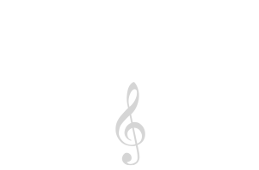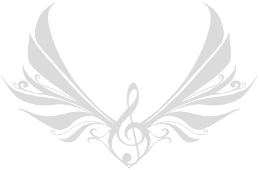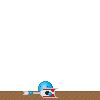Bass guitar fretboard tuning
Bass guitar notes chart
Compared to ordinary guitar, bass guitar has 4 strings, which are primary tuned exactly 1 octave lower than 4 bass (thicker) strings on ordinary guitar. This is important because of resonance frequency – we get stronger and longer sustained bass in the band.
If we use popular “drop D” tuning on the ordinary guitar, we get the same open string on both guitars that is tuned to 2D note.
On standard tuned bass with 20 frets pitch range goes from 1E to 4D♯. This means 36 different notes (pitches). Like on other guitars many notes are repeated (same pitch, different timbre). For example, note 2G is repeated four times. The only difference between these four notes is in timbre. Compared to ordinary guitar with standard tuning which has only one 2G note and therefore only one timbre, this is an advantage.
Let’s observe the positions of some notes:
- Notes 1E, 1F, 1F♯, 1G and 1G♯ on the left side (the thickest string) appear only once, just like the notes 3B, 4C, 4C♯, 4D and 3D♯ on the right side (the thinnest string).
- The first repeated bass note is 1A and the last repeated note on the treble side is 3A♯.
- The most repeated notes are 2G, 2G♯, 2A, 2A♯, 2B and 3C. Each of them can be played from four different locations.
Caution: circumstances can change when we change the tuning and/or we have the guitar with more or less than twenty frets. I used one fret more when designing the Soundmap App.
If we have bass with 21 frets with standard tuning, the highest possible note is 4E (played without bending or any other effect), which is the same as the highest opened string on ordinary guitar (the thinnest string).
So, which of these repeated notes should you use when trying out the algorithm? Well, this is not an easy question. It depends on many things, especially on what would you like to achieve.
Same note (pitch) played further from headstock on thicker string gives timbre with more bass. That is good to know.
If you are in the band, you maybe want to choose notes that go along with rhythm or lead guitar and drums. Sometimes you want stronger bass note, sometimes weaker for relativity. You can add just a little timbre to already played note by other member of the band. Stay tuned and be creative. Feel the beat under your feet (together with heartbeat – your drummer! 






































































Losing my sight. Looking for complete note chart scales, etc. for bass 4 string. Extended for 6 string ok ,I’m. Starting bass and simple guitar cause it might help understanding note patterns .fretboard charts and if coupled with sheet music I could learn something. By associatio larger and. Bolder will help. If you don’t do this can you to help.offer some links
For the guitar you use tabs. Sheet music is optimized for the piano and it’s a dragback for other instruments. However because it is a standard, it’s in the plan since the beginning… Everything else you can find 2 clicks forward at 144notes.org application.

I am right at the beginning of learning 1st instrument, Bass
This is a great site , thanks!
Debug help?
Clicking on Bass Guitar goes to https://soundmap.org.org/wp-content/uploads/bass-guitar-144notes.svg instead of https://soundmap.org/wp-content/uploads/bass-guitar-144notes.svg
Also, suggestion:
What about putting the dots on frets 3, 5, 7, 9 and 12 on the soundmap itself (like on the picture of the bass). That would be helpful for me anyway, gives extra reference points when trying to work out which fret is which note etc.
Thanks you again, a lovely resource!
Sorry for late reply. Link fixed. Dots you’ll get while clicking on the numbers. Thanks for noticing, i’ll put it in description.
Thanks for noticing, i’ll put it in description.